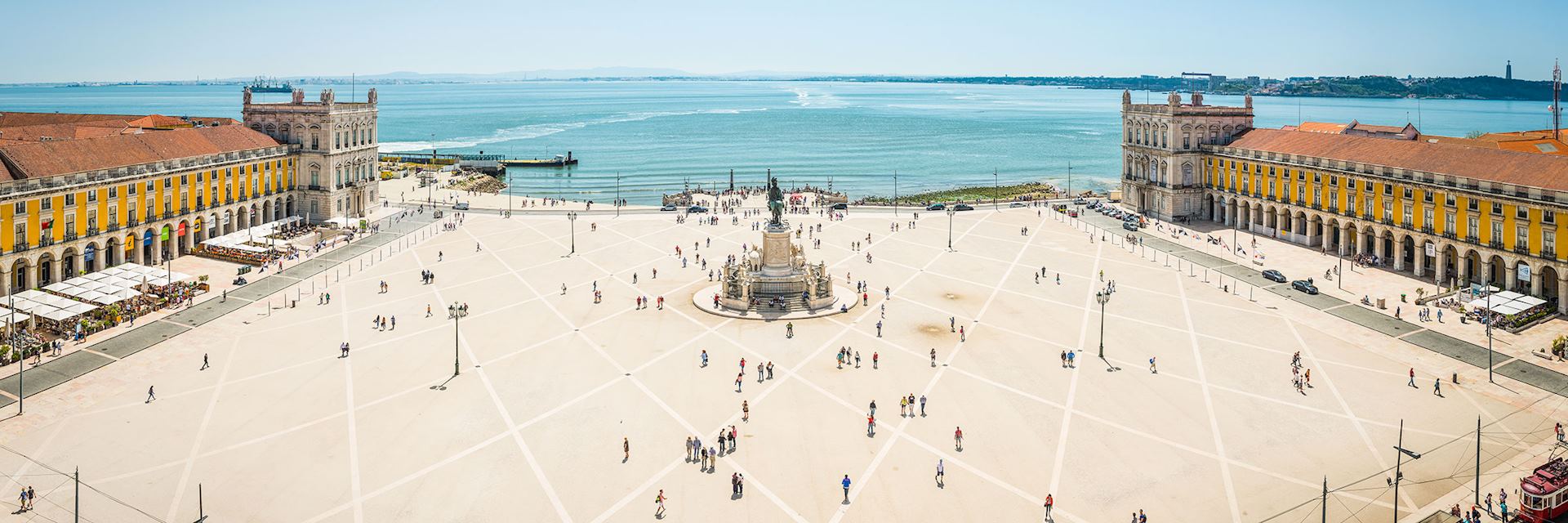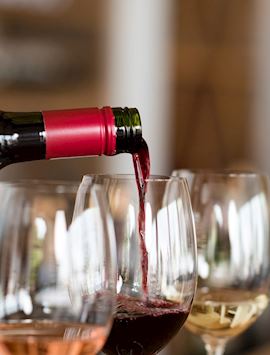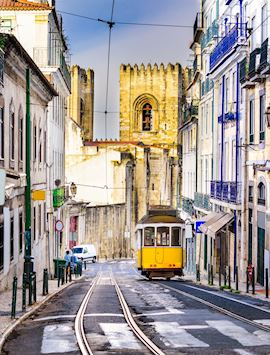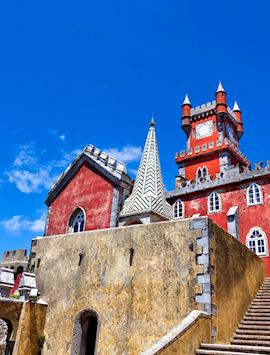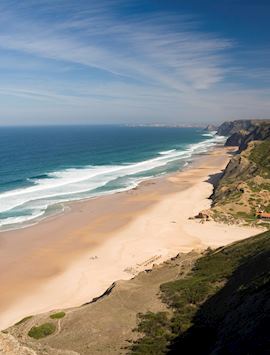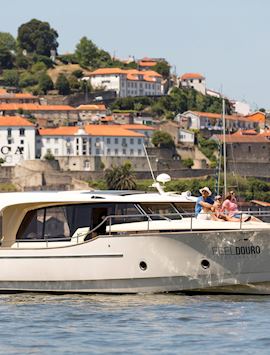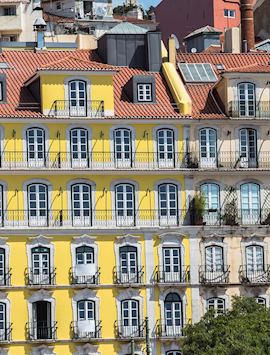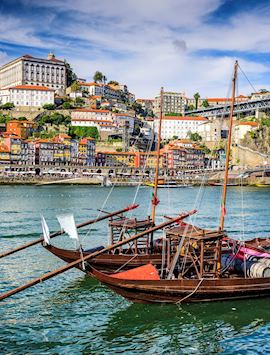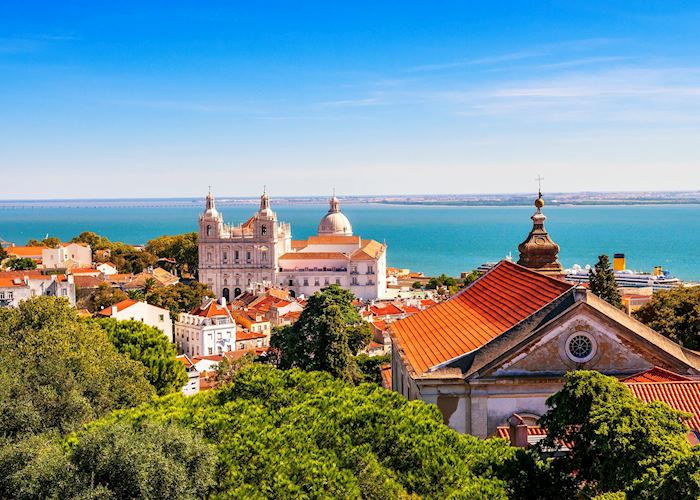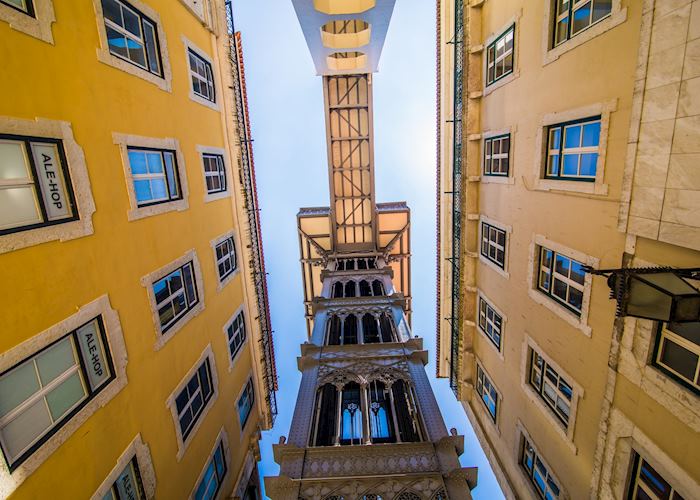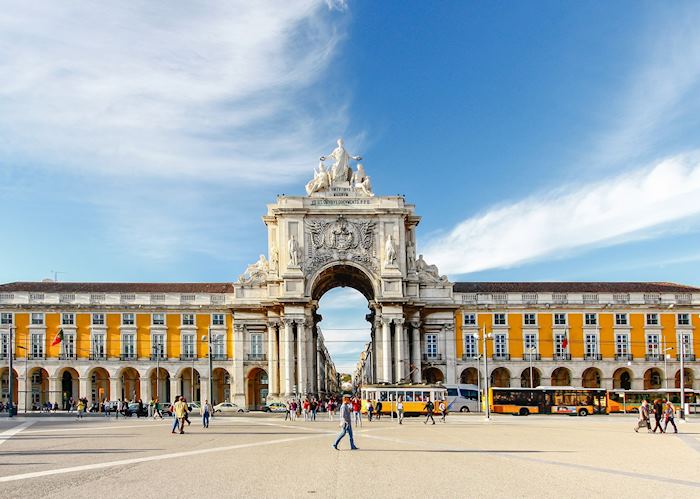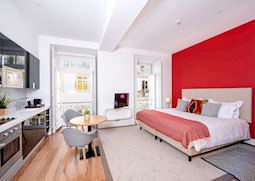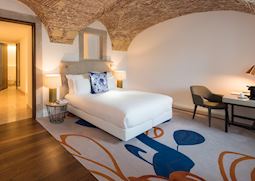Jump to:
Straddling seven hills that overlook the Tagus River, Portugal’s capital is laid across a series steep sloped, interlinked by funiculars and trams to help you navigate. A vital trading hub for centuries, Lisbon’s history is still apparent everywhere. You’ll find Moorish influences in the medina-like streets of the Alfama, Baroque architecture in Baixa and echoes of the Great Lisbon Earthquake of 1755 throughout.
 The earthquake hit on All Saint’s Day, when most of the population was in church — many died as the roofs collapsed. The survivors had to contend with a tsunami that scoured the downtown, followed by five days of fire. It’s estimated that upward of 100,000 people died, in one of history’s deadliest earthquakes. Much of the city is still defined by the rebuilding that followed.
The earthquake hit on All Saint’s Day, when most of the population was in church — many died as the roofs collapsed. The survivors had to contend with a tsunami that scoured the downtown, followed by five days of fire. It’s estimated that upward of 100,000 people died, in one of history’s deadliest earthquakes. Much of the city is still defined by the rebuilding that followed.
Lisbon isn’t mired in its past, though. During the day, the chic boulevards of Chiado bustle with shoppers and Baixa boasts a robust café culture. At night, revellers flock to the bars and restaurants of Bairro Alto or relax over a drink in many of the open squares, enjoying the view.
Spain & Portugal specialist RobLisbon, more than anywhere in Portugal, has an international feel. You’ll find restaurants serving food from former colonies like Mozambique, Brazil and Angola right next to those serving traditional Portuguese dishes.
Things to see and do in Lisbon
Alfama and Castelo de São Jorge
Lisbon’s oldest district, the Alfama is a maze of narrow streets, steep stairs and terracotta-roofed houses jumbled around the base of the daunting ramparts of the Castelo de São Jorge. The area dates back to the Moorish era — the name comes from the Arabic for hot spring, al-hamma — and many of the buildings predate the earthquake.
The Castelo de São Jorge was built in the 11th century. Its towers and crenelated walls, made of warm golden stone, offer you some of the best views in the city, particularly in the evening when drinks vendors are on hand if you want to toast the sunset.
Alfama is also the home of Lisbon Cathedral, known to locals simply as the Sé, a Romanesque cathedral built on the site of a mosque in 1150.
Baixa
The riverfront Baixa quarter was worst hit by the earthquake and the rebuilding efforts created one of Europe’s earliest planned city layouts. Nestled between the hills of the Alfama and Chiado districts, the area boasts neoclassical plazas, grand fountains and the Arco da Rua Augusta, a triumphal arch with excellent views from the top. It also has some of the first earthquake-resistant architecture in Europe.
Parça Dom Pedro IV, better known as Rossio Square — a Baroque plaza surrounded by grand boulevards — has been the beating heart of the city since the Middle Ages. You’ll also find boutiques and cafés, where you can linger with a bica (espresso) or a glass of ginja (sweet cherry liqueur that’s a local specialty).
Bairro Alto and Chiado
 West of Baixa, the Bairro Alto is a warren of streets known for its nightlife. Booths selling cocktails and other drinks dot the squares, where people congregate in the evenings. The area also hosts some of the city’s best bars and restaurants. Locals and visitors alike flock here after dark, especially in the summer, turning the barrio into an open-air celebration that lasts until dawn.
West of Baixa, the Bairro Alto is a warren of streets known for its nightlife. Booths selling cocktails and other drinks dot the squares, where people congregate in the evenings. The area also hosts some of the city’s best bars and restaurants. Locals and visitors alike flock here after dark, especially in the summer, turning the barrio into an open-air celebration that lasts until dawn.
This is also a great place to hear fado, a popular (if plaintive) genre of Portuguese folk song. The mournful tunes are usually accompanied by mandolins or guitars.
In the day, you can visit historic cafés, monuments, theatres and designer shops in nearby Chiado. The district is also home to the Convento do Carmo, the eerie, roofless ruin of a convent destroyed in the earthquake. The soaring skeleton has been left standing as a memorial to the devastation.
To the north, quiet Príncipe Real boasts brightly painted historic mansions and tranquil squares alongside antiques shops and fashionable bars.
Estoril
Once a playground for deposed monarchs and displaced dictators, this beach town was at its glamorous height during World War II. Because of Portugal’s neutrality, many aristocrats (including the Spanish royal family) chose to ride out the war in luxury along the ‘Portuguese Riviera’.
This concentration of the idle rich and powerful drew a host of spies and the town became a hotbed of intrigue. Author Ian Fleming spent time here during the war and Casino Estoril is thought to have inspired Casino Royale. Today, Estoril’s glitz has faded into an elegant resort town.
Once a sleepy fishing village, Cascais is now a bustling resort destination with powder-sand beaches that are easily accessible by car or by train. Beyond the beaches, the town’s black-and-white cobblestone streets have gardens, museums, boutiques and exceptional fish restaurants. The nightlife here is lively, bolstered by many bars and clubs.
But, you can still find Cascais’s fishing roots. The marinas are crowded with working boats moored next to pleasure vessels, and the daily catch is still auctioned off in the main square.
Parque Natural da Arrábida
Looking at the clear blue water and fine-sand beaches of the Parque Natural da Arrábida, you might be forgiven for mistaking it for a swathe of the Mediterranean. In fact, the park helps to protect a rare Atlantic example of maquis, a shrub ecosystem most commonly found around the Med.
A short drive from Lisbon, the park offers hiking through a green and piney landscape dense with pistachio and olive trees as well as herbs like lavender and thyme. Paths along the chiselled chalk cliffs provide views of the Setúbal Peninsula’s golden beaches and cerulean waters.
Palácio de Mafra
 Built by King João V in the early 1700s, the Palácio de Mafra is a Baroque palace-and-convent hybrid just north of Lisbon. With more than 1,200 rooms (and 150 flights of stairs), it’s one of the largest palaces in Europe, constructed just as the gold from Portugal’s colony in Brazil began to flow into the royal coffers.
Built by King João V in the early 1700s, the Palácio de Mafra is a Baroque palace-and-convent hybrid just north of Lisbon. With more than 1,200 rooms (and 150 flights of stairs), it’s one of the largest palaces in Europe, constructed just as the gold from Portugal’s colony in Brazil began to flow into the royal coffers.
Flush with his newly acquired wealth — and grateful for the birth of an heir — João wanted his new palace to rival the glory of Rome. The vast complex includes 11 chapels and a basilica decorated with jasper and marble sculptures made by Italian artists.
The long, sumptuous library contains more than 36,000 antique volumes, a mind-boggling number in the 18th century. A small colony of bats is released every evening into the library to help control any insects that might harm the books.
The palace was a summer residence of the kings, close to the royal hunting grounds (Tapada Nacional de Mafra), which have been turned into a nature reserve that spotlights an exceptional range of biodiversity.
Best time to visit Lisbon
Lisbon is a year-round destination, though it can get hot in the summer (June to August). We recommend visiting in March to May or September and October, when the weather is fine and the crowds are smaller.
Lisbon festivals
Freedom Day (25th April) marks the Carnation Revolution, which saw the end of Portugal’s nearly 50-year dictatorship. The city celebrates, along with the rest of the country, by hosting concerts and the annual Corrida da Liberdade, or Freedom Run.
who's been there
-
01993 838 92501993 838 461
- Make an enquiry
Suggested itineraries featuring Lisbon
Our itineraries will give you suggestions for what is possible when you travel in Lisbon, and they showcase routes we know work particularly well. Treat them as inspiration, because your trip will be created uniquely by one of our specialists.
Places near Lisbon
- Estremadura less than 5 miles away
- Belém 5 miles away
- Sintra 15 miles away
- Évora & the Alentejo 67 miles away
- Coimbra 110 miles away
- Algarve 135 miles away
- Porto 171 miles away
- Douro Valley 183 miles away
- Braga and Guimarães 200 miles away
Photos of Lisbon
Our expert guides to exploring Lisbon
Written by our specialists from their own experiences of visiting Lisbon, these guides will help you make the most of your time there. We share both our practical recommendations and the best ways to appreciate Lisbon at its best.
-
Exploring Lisbon: a city guide ![Bairro Alto, Lisbon]()
Exploring Lisbon: a city guide
Exploring Lisbon: a city guide
In Lisbon, you can visit a Moorish castle, explore the impacts of the devastating 1755 earthquake with a local guide, and experience a live fado performance. Here, Portugal specialist Geoff shares how to get the most out of your visit.
Read this guide
Accommodation choices for Lisbon
We’ve selected a range of accommodation options for when you visit Lisbon. Our choices usually come recommended for their character, facilities and service or location. Our specialists always aim to suggest properties that match your preferences.
-
![Pestana Palace Lisboa, Lisbon]()
Pestana Palace Lisboa
Lisbon -
![Memmo Príncipe Real, Lisbon]()
Memmo Príncipe Real
Lisbon -
![Martinhal Lisbon Chiado Family Suites, Lisbon]()
-
![Santiago de Alfama, Lisbon]()
Santiago de Alfama
Lisbon -
![Hotel Valverde, Lisbon]()
Hotel Valverde
Lisbon -
![Pousada de Lisboa, Lisbon]()
Pousada de Lisboa
Lisbon -
![Palácio do Governador, Lisbon]()
Palácio do Governador
Lisbon -
![H10 Duque de Loulé, Lisbon]()
H10 Duque de Loulé
Lisbon -
![Tivoli Avenida Liberdade Lisboa, Lisbon]()
Ideas for experiencing Lisbon
Our specialists seek out authentic ways to get to know the places that could feature in your trip. These activities reflect some of the experiences they've most enjoyed while visiting Lisbon, and which use the best local guides.
-
Arrábida panoramic tasting tour ![Coastline, Arrábida Natural Park]()
Arrábida panoramic tasting tour
Arrábida panoramic tasting tour
Explore some of Portugal’s most dramatic coastal scenery on this full-day private tour through the Arrábida region south of Lisbon. En route you’ll get to visit a local winery, coastal cliffs and quaint towns with medieval castles.
View details -
Traditions of Lisbon walking tour ![Tram and cityscape, Lisbon]()
Traditions of Lisbon walking tour
Traditions of Lisbon walking tour
Explore Lisbon with a local guide on a private half-day walking tour, which takes in several of its most interesting districts. You’ll learn about the city’s history and traditions, and stop for local food and drinks along the way.
View details -
Évora and the Alentejo: wine and gourmet tour ![Grape vines, Alentejo]()
Évora and the Alentejo: wine and gourmet tour
Évora and the Alentejo: wine and gourmet tour
Explore the Alentejo, Portugal’s most significant food and wine region, on a full-day private tour. You’ll see Roman remains and medieval streets in historic Évora, sample local wines in a family-run winery, and drive through rolling countryside in-between.
View details -
Mafra, Óbidos and Batalha ![Palace of Mafra, Portugal]()
Mafra, Óbidos and Batalha
Mafra, Óbidos and Batalha
Get to grips with Portuguese history with the help of a private guide on this full-day tour from Lisbon that takes in the 14th-century Monastery of Batalha, a medieval hilltop village and the flamboyant Palácio Nacional de Mafra.
View details

